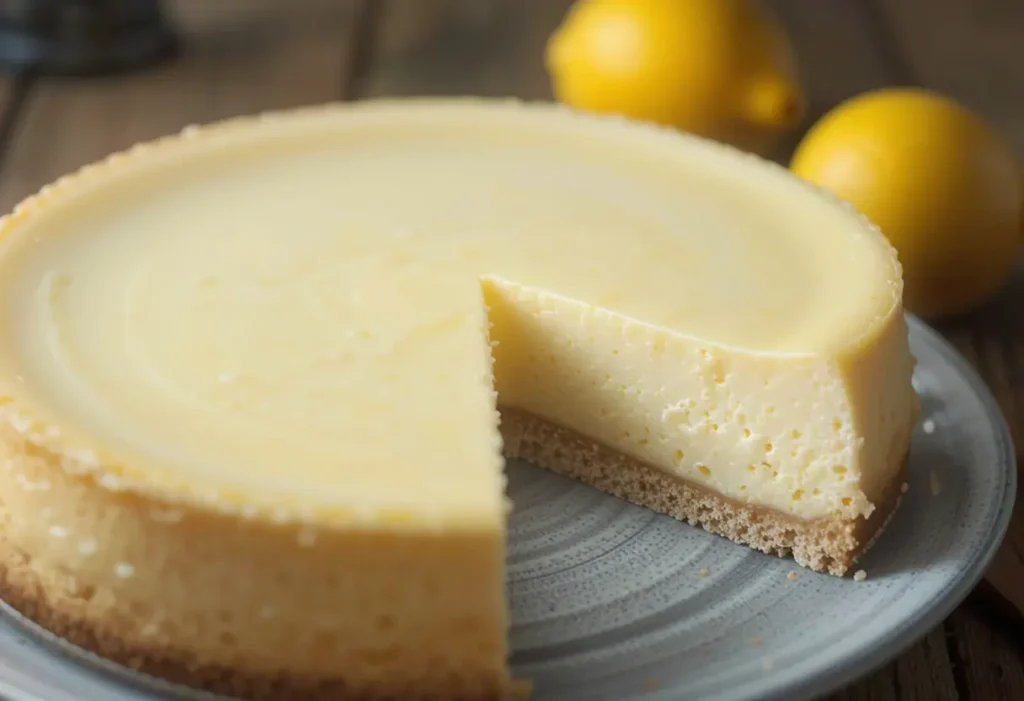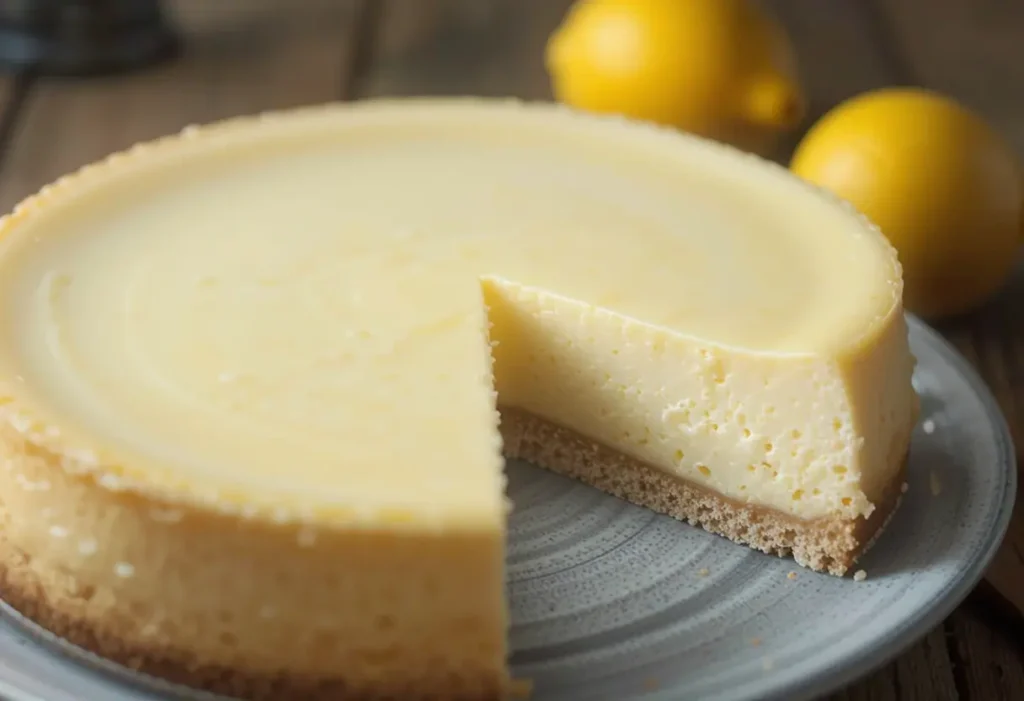lemon cheesecake is a dessert that’s both creamy and tangy, loved by many for its refreshing taste. However, there are times when even the most experienced bakers might encounter a frustrating problem – lemon cheesecake not setting. If your lemon cheesecake remains runny or soft, don’t worry. This article will explore the possible reasons why your cheesecake didn’t set and offer solutions to fix it.
To better understand the common causes of this issue, it’s helpful to know a bit more about cheesecake-making fundamentals. You might also want to check out our Lemon Blueberry Cheesecake for a different take on this classic treat.
Why did my lemon cheesecake not set?
1. The Importance of the Right Ingredients
To ensure your lemon cheesecake sets properly, it’s crucial to start with the right ingredients. If you’re missing any key components or using incorrect substitutes, it can affect the texture and firmness of the cheesecake. Here’s a breakdown of the critical ingredients and their role:
- Cream cheese: The foundation of a cheesecake, providing richness and structure.
- Eggs: Used to bind the ingredients together and provide firmness.
- Sugar: Helps stabilize the mixture, though too much sugar can prevent the cheesecake from setting properly.
It’s also worth understanding how certain ingredients like vinegar can impact the texture. For more on why vinegar is used in cheesecake recipes, refer to our article on Why Do You Put Vinegar in Cheesecake?.


2. Incorrect Oven Temperature
If your lemon cheesecake isn’t setting, it could be due to the temperature at which you baked it. Cheesecakes need to cook at a gentle, consistent temperature to avoid cracking and ensure proper setting. The typical baking temperature for a cheesecake is around 325°F (163°C). If the temperature is too high, the cheesecake may cook too quickly on the outside but remain soft in the middle.
Additionally, baking times can vary based on the size of your pan and the specific recipe you follow. It’s also a good idea to check out our post on What Is the Difference Between a Traditional Cheesecake and a New York Cheesecake? to learn more about the different types of cheesecakes and their baking needs.
3. Overmixing or Undermixing the Batter
The way you mix your lemon cheesecake batter is crucial to getting the right texture. If you overmix, you can incorporate too much air, which can cause cracks and prevent the cheesecake from setting properly. On the other hand, undermixing may leave some ingredients not fully combined, leading to a less stable mixture.
- Overmixing can cause the cheesecake to be too fluffy, preventing it from setting firmly.
- Undermixing can leave lumps, making it difficult for the cheesecake to hold together.
A good tip is to mix the ingredients just until they are fully incorporated, especially when adding eggs.
4. The Role of Gelatin or Agar-Agar
In many lemon cheesecake recipes, a stabilizer like gelatin or agar-agar is used to help the cheesecake set properly. If you didn’t use a stabilizer, or if you didn’t add enough, this could explain why your cheesecake remains soft.
- Gelatin: Commonly used in no-bake cheesecakes, helps the mixture firm up once cooled.
- Agar-agar: A vegetarian alternative to gelatin that also helps set the cheesecake.
If you’re working with a no-bake cheesecake, it’s critical to make sure you’re using the correct type and amount of gelatin for the recipe.

5. The Cooling Process
One key mistake many bakers make is not allowing the lemon cheesecake to cool properly. After baking, it’s essential to let your cheesecake cool gradually, often in the oven with the door ajar, before moving it to the fridge to chill.
- Cooling slowly: Letting your cheesecake cool slowly prevents the temperature shock that can cause cracks and prevent it from setting.
- Refrigerating properly: Cheesecake needs several hours in the fridge to set, ideally overnight.
A common question is whether or not to refrigerate cheesecake immediately after baking. We recommend reading up on some common cheesecake-related queries like Why Is My Strata Soggy? to understand how cooling and storage can affect similar recipes.

6. Mistakes to Avoid in Cheesecake Making
When making a lemon cheesecake, certain mistakes can prevent the dessert from setting. Here’s a quick list of things to avoid:
- Not letting the cheesecake cool gradually.
- Using the wrong type of cream cheese (check your recipe to ensure you’re using the best option).
- Skipping the refrigeration step or not allowing it to chill long enough.
We recommend learning more about the fundamental mistakes that can occur in other recipes by checking out our guide on Mississippi Chicken Recipe – A Comfort Food Classic.
7. FAQs
Here are answers to some frequently asked questions regarding lemon cheesecake setting:
- Why is my cheesecake still liquid after baking?
This can be caused by using too much liquid, not enough stabilizers like gelatin, or not baking it long enough. Try adjusting the ingredients and temperature. - Can I freeze a cheesecake that didn’t set?
Yes, but it may not have the perfect texture after being frozen. It’s best to try fixing it by following the right recipe guidelines. - How do I prevent cracks in my cheesecake?
Slow cooling, using a water bath, and avoiding overmixing can help prevent cracks.
By following these tips, you’ll be able to troubleshoot your lemon cheesecake and ensure it sets properly. Don’t forget to check out other related articles, such as Lemon Caper Salmon, to explore more lemon-based recipes!
Why did my lemon cheesecake not set?

